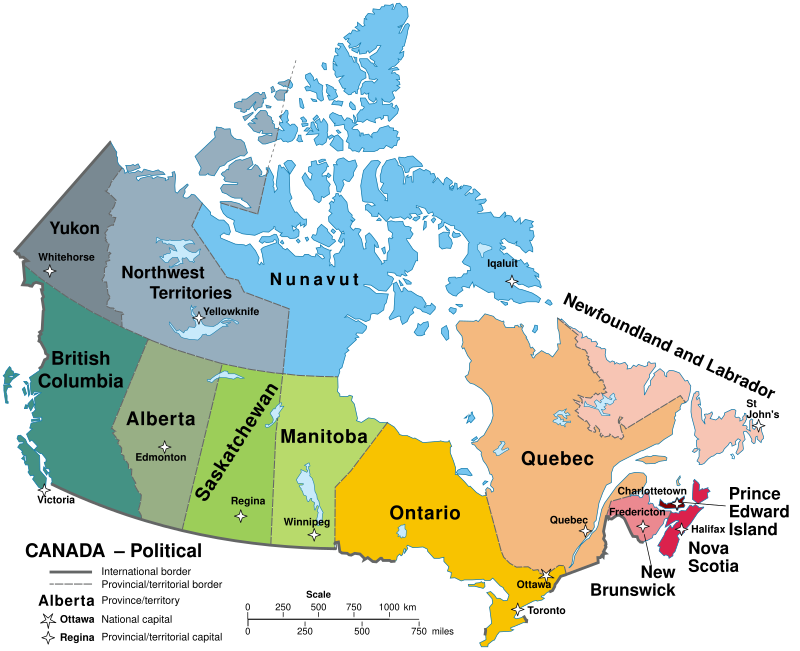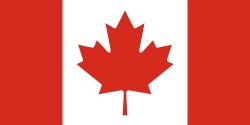Canada
Canada
Canada, the world’s second-largest country by total area, is a land of stunning natural beauty, cultural diversity, and dynamic modern development. Stretching from the Atlantic Ocean in the east to the Pacific Ocean in the west, and northward into the Arctic, Canada is celebrated for its picturesque landscapes, progressive society, and inclusive values. Its mosaic of cultures, indigenous heritage, and bilingual identity have shaped a nation admired globally for its stability, tolerance, and quality of life. This article explores the history, geography, provinces, culture, and modern achievements of Canada, offering a comprehensive guide for anyone interested in understanding this remarkable country.
History of Canada
Indigenous Peoples and Early History
Long before European explorers set foot on the North American continent, Canada was inhabited by diverse Indigenous peoples, including the First Nations, Inuit, and Métis. Archaeological evidence reveals human presence dating back over 15,000 years. These groups developed unique cultures, languages, spiritual beliefs, and systems of governance, each adapted to the region’s varied climates and geographies. Indigenous communities maintained complex trade networks, sustainable resource management, and oral traditions that continue to influence Canadian identity today.
European Exploration and Colonization
The first known European contact came with Norse explorer Leif Erikson around 1000 CE, who established a short-lived settlement at L’Anse aux Meadows in present-day Newfoundland. However, it was John Cabot’s voyage in 1497, sponsored by England, that opened the door to more sustained European interest. In the 16th and 17th centuries, French and British explorers claimed territories, founded settlements, and developed the fur trade, leading to the establishment of New France and later British colonies.
The Birth of a Nation
Throughout the 18th century, France and Britain vied for dominance in North America, culminating in the British conquest of New France in 1763. The British North America Act of 1867 (Confederation) united Ontario, Quebec, New Brunswick, and Nova Scotia into the Dominion of Canada, establishing a self-governing federation within the British Empire. Over the years, additional provinces and territories joined, and Canada gained full legislative independence from the United Kingdom with the Statute of Westminster (1931) and the patriation of the Constitution in 1982.
Modern Era
Canada has played significant roles in world affairs, including both World Wars and peacekeeping missions. Its economy evolved from resource-based to highly diversified, and the nation became a champion of multiculturalism, bilingualism (English and French), and Indigenous rights. Today, Canada is recognized for its stable democracy, vibrant cities, and commitment to social welfare, environmental stewardship, and global cooperation.
Geography of Canada
Vast and Varied Landscapes
Canada’s geography is as diverse as its people, spanning approximately 9.98 million square kilometers. The country is divided into ten provinces and three territories, each featuring distinct physical characteristics.
- The Canadian Shield: A vast rocky plateau stretching from Labrador through Ontario and into the north, rich in minerals and ancient forests.
- The Prairies: Flat, fertile lands in Manitoba, Saskatchewan, and Alberta, known for agriculture and big skies.
- The Atlantic Region: Rugged coastlines, islands, and fishing communities in Newfoundland and Labrador, Nova Scotia, New Brunswick, and Prince Edward Island.
- The West Coast: British Columbia, with its temperate rainforests, mountain ranges, and Pacific shoreline.
- Northern Canada: The territories—Yukon, Northwest Territories, and Nunavut—feature tundra, permafrost, and Arctic wildlife.
Climate
Canada’s climate varies dramatically from region to region. The southern areas experience four distinct seasons, while the far north endures long, harsh winters and short, cool summers. Coastal regions are moderated by oceans, and the interior can be subject to extreme temperature swings. This climatic diversity shapes the country’s ecosystems, agriculture, and ways of life.
Natural Wonders
- Niagara Falls: One of the world’s most famous waterfalls, straddling the Ontario–New York border.
- Rocky Mountains: Majestic peaks in western Canada, home to renowned national parks like Banff and Jasper.
- Great Lakes: The world’s largest group of freshwater lakes, bordering Ontario.
- The Arctic: A vast wilderness of ice, tundra, and unique wildlife like polar bears and caribou.
Provinces of Canada
Canada consists of ten provinces and three territories, each with its own government, culture, and geographic features.

The Ten Provinces
- Alberta
- British Columbia
- Famous for the Pacific coastline, rainforests, and the multicultural city of Vancouver.
- Manitoba
- Prairies, lakes, and a blend of Indigenous and immigrant communities.
- New Brunswick
- Maritime province with Acadian culture and coastal landscapes.
- Newfoundland and Labrador
- Easternmost province, known for rugged coastlines, fishing villages, and distinct dialects.
- Nova Scotia
- Rich maritime history, Celtic culture, and scenic coastal drives.
- Ontario
- Prince Edward Island
- Smallest province, famed for red sand beaches, seafood, and Anne of Green Gables.
- Quebec
- French-speaking province, known for its unique culture, history, and the city of Montreal.
- Saskatchewan
- Vast plains, agriculture, and sunny skies.
The Three Territories
- Yukon
- Historic Gold Rush territory, wilderness, and outdoor adventure.
- Northwest Territories
- Vast, sparsely populated land with dramatic landscapes and the Mackenzie River.
- Nunavut
- Largest and newest territory, predominantly Inuit population, and Arctic environment.
Each province and territory has its own unique identity, government, and traditions, contributing to the diversity of the Canadian federation.
Culture of Canada
A Mosaic of Cultures
Canada is celebrated for its multiculturalism, where people of diverse backgrounds maintain their cultural traditions while participating fully in Canadian society. Over 200 ethnic origins are reported in census data, and more than 20% of Canadians are foreign-born.
- Indigenous Heritage: Indigenous art, languages, music, and traditions are integral to Canadian culture.
- French and British Influences: Both French and English languages and customs remain prominent, reflected in law, education, and the arts.
- Immigrant Contributions: Successive waves of immigration have brought traditions from Asia, Africa, Europe, and the Americas, enriching Canada’s social fabric.
Arts and Literature
Canadian literature is internationally respected, with authors like Margaret Atwood, Alice Munro, and Michael Ondaatje gaining global recognition. The nation’s film industry thrives in cities like Toronto and Vancouver, while music icons include Leonard Cohen, Celine Dion, Drake, and The Weeknd.
National Symbols and Holidays
- Maple Leaf: Featured on the national flag.
- Beaver: Recognized as a national animal.
- Canada Day: Celebrated on July 1st, marking Confederation.
- Thanksgiving: Observed in October, reflecting the harvest season.
Sports and Recreation
Ice hockey and lacrosse are national sports, but Canadians also excel in figure skating, basketball, and winter sports. Outdoor recreation—hiking, canoeing, skiing—is a way of life, supported by an extensive national parks system.
Modern Development in Canada
Economy
Canada boasts a highly developed, resource-rich economy. It is a global leader in mining, energy, agriculture, forestry, and fisheries, but also excels in technology, finance, manufacturing, and services. Toronto is a financial powerhouse, while Vancouver is a gateway for trade with Asia.
Technology and Innovation
Canada invests heavily in education, research, and technology, and ranks high in global innovation indexes. Its cities are hubs for tech startups, artificial intelligence, clean energy, and green infrastructure.
Education and Healthcare
Canada’s publicly funded healthcare system and high-quality education are points of national pride. Universities like the University of Toronto, McGill, and UBC attract students worldwide.
Environmental Leadership
Canada is committed to environmental stewardship, balancing resource extraction with conservation efforts. The government invests in renewable energy, sustainable forestry, and emissions reduction, although debates over pipeline development and climate policy remain.
Social Policy and Inclusiveness
Universal healthcare, progressive taxation, multicultural policies, and strong social safety nets help define the Canadian model. Ongoing work includes addressing reconciliation with Indigenous peoples, gender equality, and affordable housing.
FAQs about Canada
1. What is the capital of Canada?
Ottawa is the capital city, located in the province of Ontario.
2. What languages are spoken in Canada?
Canada is officially bilingual, with English and French as official languages. Many Canadians speak other languages at home, including Punjabi, Mandarin, Spanish, and Arabic.
3. Is Canada safe to visit or live in?
Canada is considered one of the safest countries in the world, with low crime rates and a high standard of living.
4. What is the population of Canada?
As of 2025, Canada’s population is estimated at approximately 40 million people.
5. What are some famous Canadian inventions?
Insulin, the telephone, basketball, and the snowmobile are among Canadian innovations.
6. What is Canada known for?
Canada is known for its natural beauty, multicultural cities, friendly people, high quality of life, and winter sports.
7. What are Canada’s major industries?
Key sectors include natural resources (oil, minerals, forestry), technology, finance, manufacturing, and tourism.
8. What is the weather like in Canada?
Weather varies widely—from mild on the west coast, to cold winters in the prairies, to Arctic conditions in the north. Most Canadians experience four distinct seasons.
9. Do I need a visa to visit Canada?
Visa requirements depend on your country of origin. Many visitors need an Electronic Travel Authorization (eTA) or a visitor visa.
10. How do Canadians celebrate their national holidays?
Major holidays include Canada Day (July 1), Thanksgiving (October), Victoria Day (May), and various regional celebrations. Festivities often involve parades, fireworks, family gatherings, and outdoor events.

